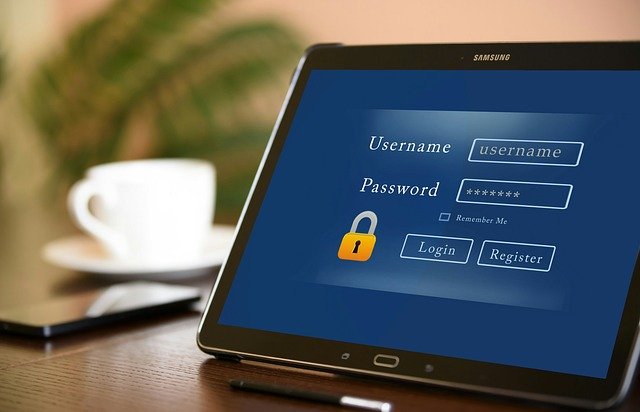How to create a secure password to prevent intrusions?
The best way to create a secure password is by using multiple types of characters to create a long, random, and unique password for each account.
- Unique Password: Never reuse the same password for different accounts. Instead, use unique passwords for each account. This ensures that if there is a security breach on one platform or if an employee acts maliciously, only the information on that specific platform will be at risk.
- Long Password: Avoid creating short passwords, as they can be quickly deduced by password-generating programs. Aim for a longer password (around 15 characters).
- Random Password: Avoid using common words, obvious combinations, predictable sequences, etc. The different characters in your password should be randomly selected, making them impossible to predict.
- Password with Multiple Types of Characters: The more types of characters you use, the stronger, more difficult, and more secure your password will be. Try to include lowercase letters, uppercase letters, numbers, and special characters.
- Do Not Share Passwords: Avoid sharing passwords altogether. Even if you trust the person you are sharing it with, accidents can happen, such as writing it down in an unprotected place, leaving a session open, sharing it with someone else, etc. If you must share it due to an emergency, make sure to change it afterwards.
- Change Your Password Regularly: There are constantly security breaches and leaks on the internet. If you have been affected by such an incident, be aware that your password may have been exposed and circulating among cybercriminals. To stay ahead of any potential security breaches, change your password regularly for added security.
How to Safely Store a Password?
To securely store a password, it is best to memorize it. If you need to write it down, keep the written note in a safe and well-hidden place. Never write your password on a digital medium; alternatively, use a password manager.
- Memorize and Avoid Writing Passwords in Visible Places: Memorizing your passwords provides total protection against the possibility of someone stealing them. However, with numerous passwords, it can be challenging to remember them all if they are not frequently used. If you need to write them down on paper, do so on a physical medium that can be securely stored, hidden, and out of reach of third parties.
- Never Write Your Password on a Digital Medium: Although it may be convenient to store all your passwords in a Word document for easy copying and use, it is not a secure option. In the event of a cyber-attack, it would be easy for a cybercriminal to scan all the data on your computer and obtain your secret codes.
- Password Manager: If you want to conveniently have all your passwords on your device for easy copying and practical use, consider using a password manager. It allows you to store all your passwords in an encrypted and secure manner. You only need to remember the password for the manager itself, and you can access all your passwords securely. There are many password managers available, and most of them have free versions.
How Can Third Parties Discover Your Password?
Unauthorized individuals can access your accounts by deducing your password because it is too easy, stealing it when written in an insecure place, or hacking your computer.
- Password Deduction: If your password is not strong enough, it is easy for a cybercriminal to deduce it using malicious software programs.
- Theft of Handwritten Password: If you choose to write down your passwords physically on paper, you must keep your notes secure; otherwise, third parties could steal your passwords.
- Password Theft through Hacking: No matter how strong and secure your password is, if you do not take precautions and a virus penetrates your computer’s system, it can compromise your security. To learn more about how to prevent your computer from being hacked, check out this other article on this topic.
How to Prevent Unauthorized Access to Your Accounts in Case of Password Theft?
The best way to prevent unauthorized access to your accounts, even if your password is stolen, is by using two-factor authentication.
Most online platforms and entities allow you to configure the security settings of your account, enabling the use of a second authentication step. For example, this could involve entering a temporary password received via email or entering a code received via SMS on your mobile device.
The highest level of security can be achieved through two-factor authentication based on mobile biometric authentication (fingerprint or facial recognition).
While it may be somewhat inconvenient, enabling two-factor authentication in your account settings provides an additional layer of security. This way, even if your password is stolen, no one can access your account without the second authentication factor.
How to Determine if Your Accounts Have Been Accessed Unauthorizedly Due to Password Theft?
Most online platforms allow you to configure your account to receive notifications if someone accesses it from a device different from your usual one.
Ensure that you set up your personal security settings online by providing an email address or mobile phone number that you regularly check, so you can receive all security notifications.
Additionally, you can configure your accounts to only allow access from devices that you have previously authorized through mobile or email authentication.
What to Do in Case of Password Theft?
If your password has been stolen, quickly restore your account by creating a new password through the associated email or mobile phone.
If the cybercriminal has managed to modify the information related to your email or mobile, you should contact the platform’s support team to request the blocking and restoration of your account. They will likely ask for personal information to verify that you are the legitimate owner of the account.

